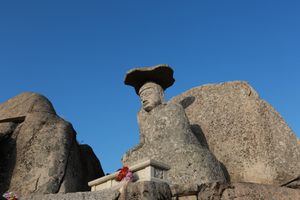About
Taking 16 years to carve, the massive Buddhist canon known as the Tripitaka Koreana is a staggering collection of wooden printing blocks known as one of the most complete doctrinal texts in the entire religion and is said to not contain even one error across its tens of thousands of "pages."
Originally carved in the late 11th century as a devotional work meant to change the fortunes of a feudal war in Korea by invoking the Buddha, the original version of the writings were eventually destroyed by a Mongul fire. The second edition of the work, which still exists today was commissioned between 1236 and 1251, again in an effort to curb an invasion of hostile forces.
Once completed, this second collection of Buddhist doctrine, law, and philosophy covered 81,258 wooden print blocks, containing 52,382,960 flawless characters. The mind-boggling work was moved to a temple known as Haeinsa in 1398 and has been housed across four separate buildings ever since, weathering centuries of time.
Today the ancient birch wood tablets have all been treated to prevent any further decay and are still located in the same temple housing they have been for centuries. The building was specifically designed to keep optimum ventilation, temperature, and humidity levels, and even after hundreds of years, it’s done better than modern technology. In 1970, the blocks developed mildew after being moved to a newly built storage facility, and were promptly returned here for their long-term preservation. The collection is not only listed as a UNESCO World Heritage Site but is also the 32nd National Treasure of Korea.
Related Tags
Know Before You Go
Start from Dongdaegu or Daegu train station, and make your way to Seongdangmot subway station (line 1 towards Daegok, exit 3) and head to the Seobu City Bus Terminal. Buses for Haeinsa leave every 40 minutes, make several stops along the way and take about 1 1/2 hours to arrive. Once off the bus, walk downhill for a few hundred meters and turn left down the well-worn path. Keep following the signs for Haeinsa and you’ll pass the museum after a few hundred meters.
Community Contributors
Added By
Published
August 21, 2014
Sources
- http://www.lifeinkorea.com/travel/skyongsang/tripitaka.htm
- http://english.visitkorea.or.kr/enu/CU/CU_EN_8_5_8_5.jsp
- http://whc.unesco.org/en/list/737
- http://en.wikipedia.org/wiki/Tripitaka_Koreana
- https://www.oneweirdglobe.com/destination-haeinsa-complete-with-wonderful-fall-colors-gyeongsangnam-do/














































